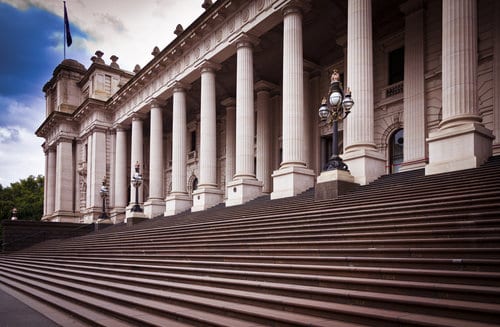
The Federal Coalition’s refusal to tackle climate change means we need to see more political leadership from state governments such as Victoria.
Despite alarming melting of the polar icecaps and unprecedented bleaching of the Great Barrier Reef, federal Treasurer Scott Morrison didn’t event mention climate change in his 2017 Budget address.
While it’s convenient for the Liberal and National parties to ignore the problem, their inaction leaves communities exposed to climate impacts.
In contrast to his Federal counterpart, Victorian Treasurer Tim Pallas noted in his budget speech that “climate change is a genuine threat.” It is.
New research from ABARES shows climate change is already hitting the agricultural sector. And communities across the state have experienced extreme events such as bushfires, droughts, heatwaves, and floods. These events are set to get worse and will hit the elderly and the poor hardest.
The Victorian Treasurer isn’t afraid to mention climate change because the Labor government has shown leadership during its three years of office.
Earlier in 2017 the Andrews government strengthened the Climate Change Act and legislated a permanent ban on onshore gasfields. I
t will soon enshrine in legislation a Victorian Renewable Energy Target that will build 5,400MW of new wind and solar farms by 2025. In addition to reducing our state’s contribution to global warming, more renewables will place downward pressure on electricity prices – this is good news for Victorian consumers and manufacturers.
With global warming accelerating, these respectable policy outcomes must be seen as foundation stones upon which the Andrews government can continue climate policy leadership. The Victorian budget is the logical next step to advance climate policy.
The budget process has evolved over decades to adapt to new challenges. Victorian Labor has an opportunity to bring it into the 21st century to accounting for climate change—an issue that will have budgetary implications for decades to come.
The most obvious way for Labor to show leadership in the budget is to increase the level of investment in climate action. After all, an ounce of prevention is worth a pound of cure.
The Andrews government’s third budget delivers on many fronts, particularly for family violence, the state’s number one law-and-order issue, and long-needed upgrades to the regional rail network. Yet when it comes to expenditure on climate change, Victoria is coming off a low base.
Of the $798 million allocated towards the environment in the 2017-18 budget, $153 million could arguably be considered climate-related expenditure. As for direct investment in climate change, there’s $12.8 million to deliver the Climate Change Act and $12.6 million for climate adaptation planning over four years.
Investment in climate action will have to be ramped up significantly to for the government to meet its Emissions Reduction Target of 15-20 percent by 2020.
The second aspect of modernising the budget relates to transparency and good accounting.
While the government has a clear grasp of the dynamics affecting education, health, and infrastructure expenditure, it’s unclear how climate is impacting the budget and what’s allocated towards climate change prevention, resilience to impacts, and disaster response.
Bringing greater transparency to climate change in the budget will allow for its impact on state finances to be understood and tracked over time. If we don’t track the costs, how can we plan for future impacts?
Leading energy policy expert Alan Pears AM has an elegant solution for the government to account for climate change. Pears recommends the government adopt a ‘shadow carbon price.’
“The reality as I understand it,” Alan Pears says, “is that many major companies are incorporating shadow carbon prices of up to $20 per-tonne into decision making.”
“If it’s good enough for many companies,” Pears adds, “it should be good enough for the Victorian government as well.”
Alan Pears warns that failure to account for climate change leaves governments and the community exposed to carbon liabilities.
“Factoring carbon prices into the budget would make it clear that the Victorian government is acting responsibly on climate change.”
The Cain government modernised the Victorian budget in the 1980s. It brought greater transparency to the process by linking expenditure to a broader economic strategy and later including social justice thinking.
What legacy will Premier Andrews and Treasurer Pallas leave? Modernising the budget for 21st Century challenges will deliver better outcomes for Victoria for decades to come.
Leigh Ewbank is Friends of the Earth’s Act on Climate coordinator. He coordinated the Yes 2 Renewables campaign for a Victorian Renewable Energy Target between 2012 and 2016










